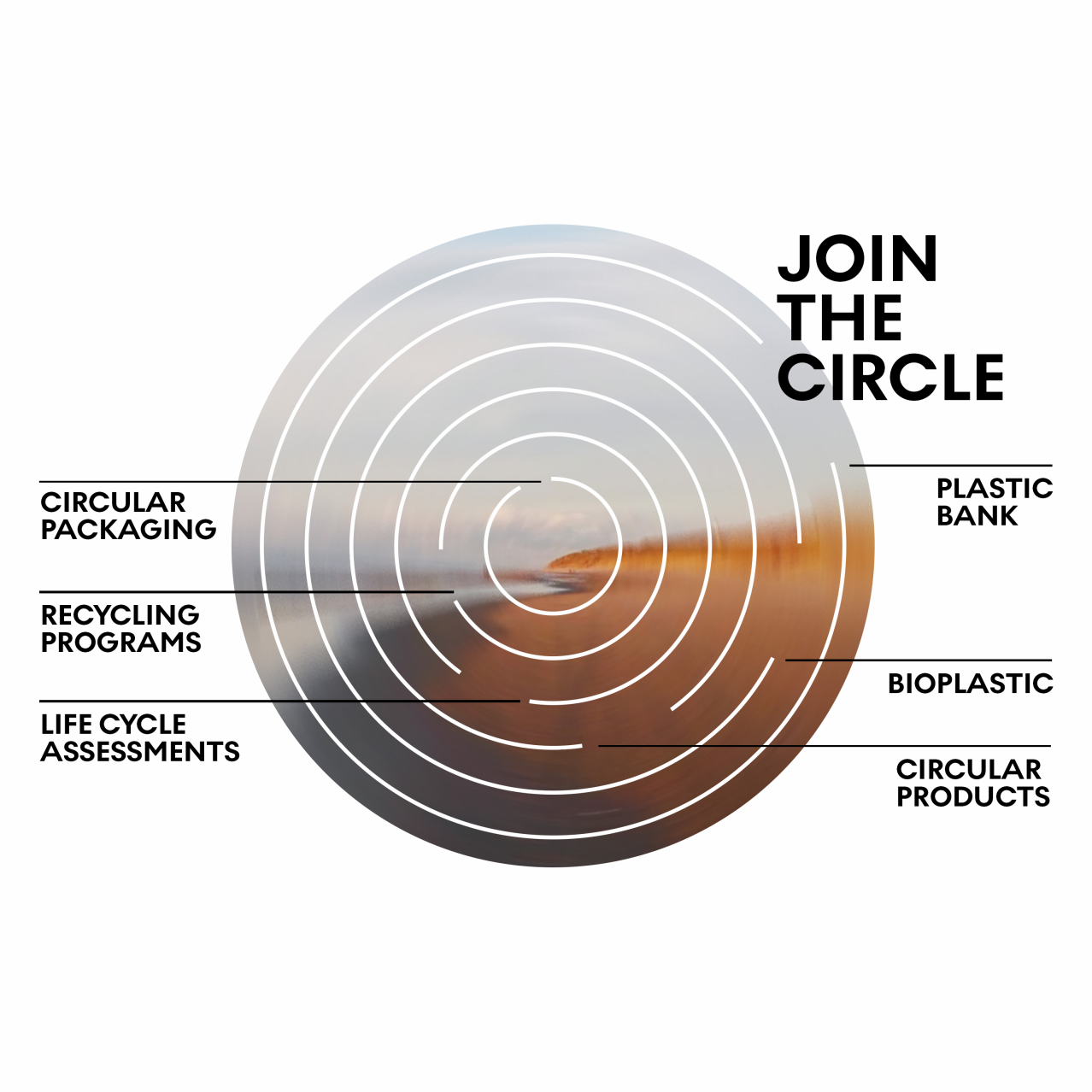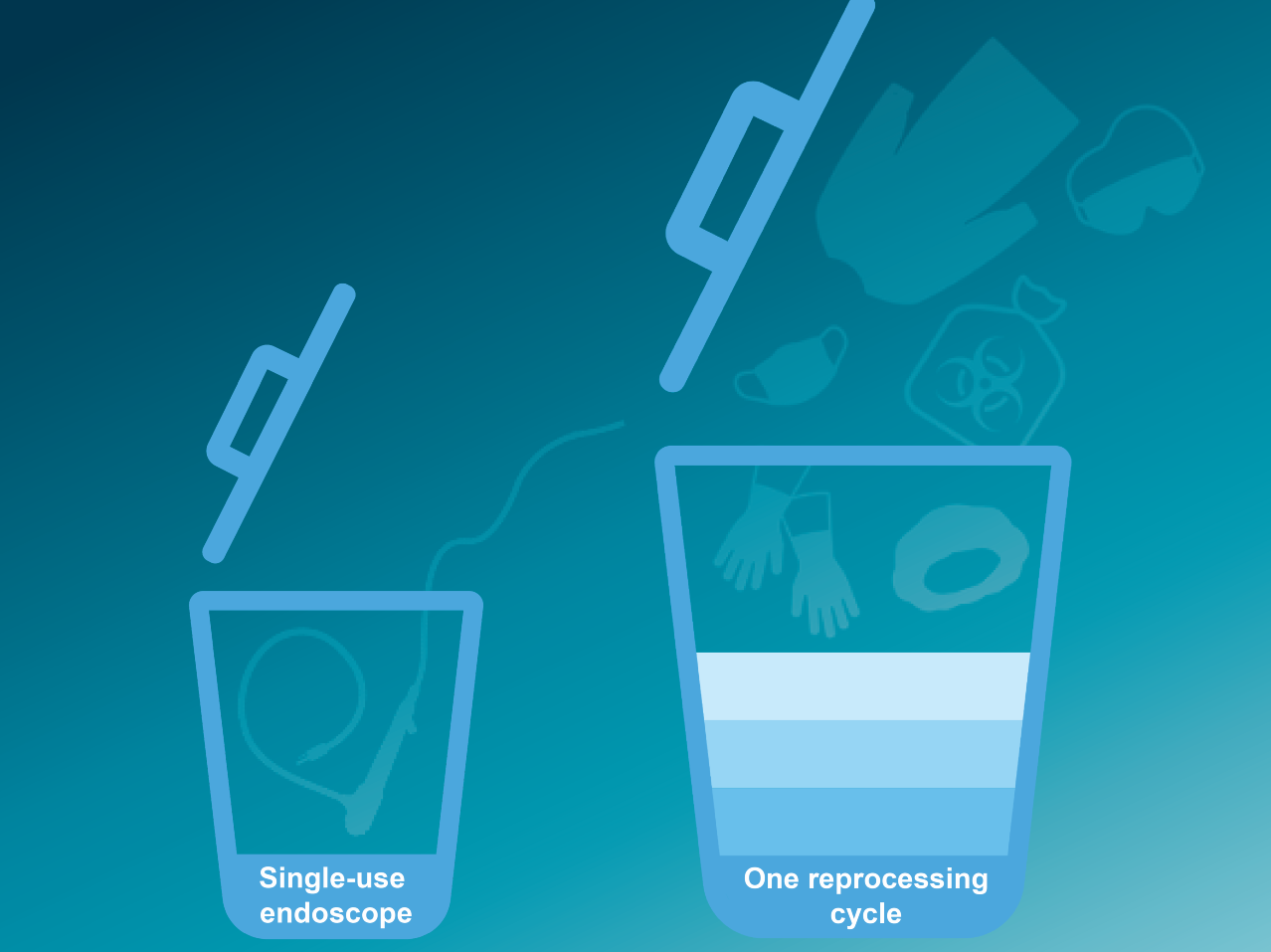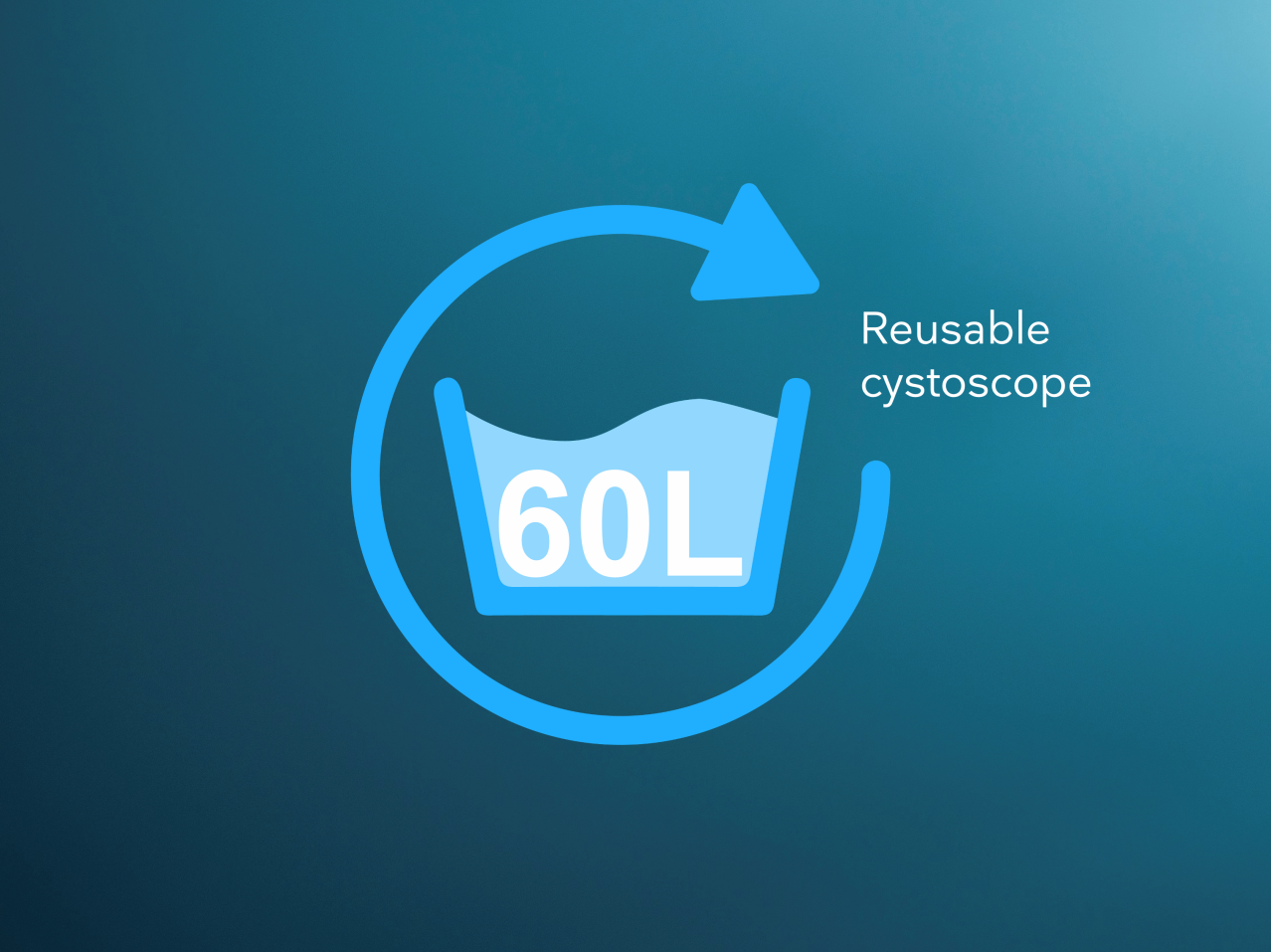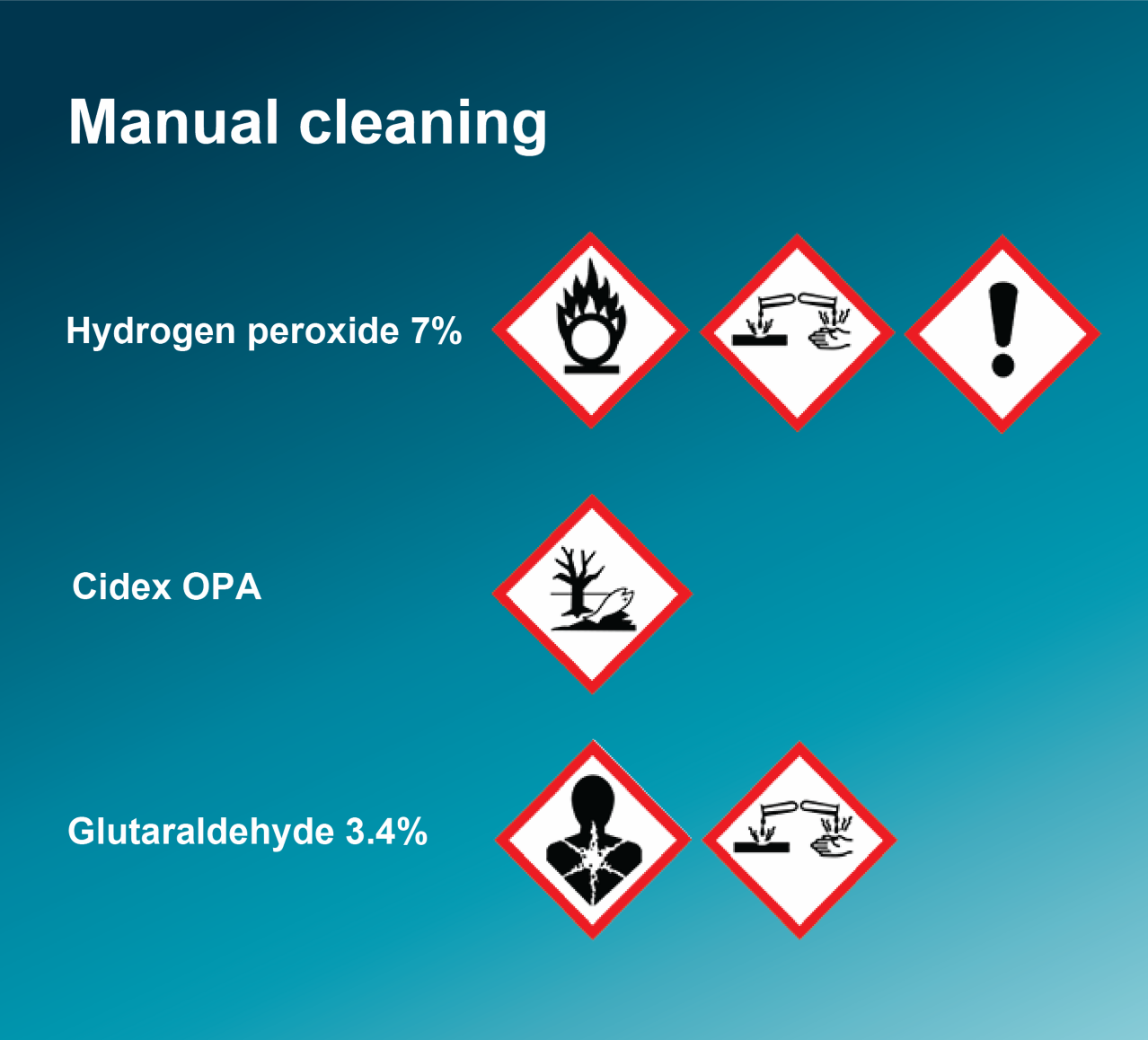Leading by example
We aim to create solutions that not only improve healthcare for professionals and their patients, but also have the lowest environmental footprint possible via:
- An integrated circular approach from product design to manufacturing and disposal of our devices
- Research to find renewable materials that reduce the impact of the plastic in our products and material used for our packaging
- Solutions for take-back and recycling processes that keep our products from ending up in landfills and transform waste into energy
- Immediate actions that offset the environmental impact of our products while we simultaneously work towards long-term solutions
Ambu’s ongoing collaborations with customers, partners and suppliers help to drive a circular approach, which every participant adds to and benefits from. Join the Circle.

JOIN THE CIRCLE
Get an overview of our efforts to drive circular thinking in the healthcare industry.
Introducing bioplastics in our endoscopes
The world’s first endoscopes with bioplastic material
One tangible example of how we are paving the way in sustainability for single-use endoscopy is by introducing the use of bioplastics in our endoscope handles. This will start with Ambu® aScopeTM Gastro Large, and by 2025, we aim to use bioplastics in every endoscope handle we produce. While there will be no difference in the look, feel and performance of our endoscopes, the handles will be composed of material with a lower carbon footprint.
A more sustainable source of material
Bioplastics are made from second-generation bio-based feedstock mixed with fossil-based raw materials. Second-generation bio-based feedstock:
Reduces our carbon footprint
The ABS plastic used in the handles emits 70% less CO2 than handles made from purely fossil-based ABS plastic.* (Note that this reduction applies to the carbon footprint of the ABS plastic in the handle only, not the full lifecycle for the finished good.)
In the future, we will build on this initiative by expanding the use of bioplastics in other parts of our endoscopes. We will also work towards introducing bioplastic material with an even smaller carbon footprint.
*Based on cradle-to-gate LCAs on the raw material from the supplier. The LCAs compared ABS plastic made with 100% fossil-based feedstock with our new bioplastic ABS (which consists of 50% second-generation bio-based feedstock and 50% fossil-based feedstock).
For more information on our bioplastics initiative, read the FAQ.
Learn more about single-use endoscopes and the environment
Scroll down to learn how single-use endoscopy solutions compare with reusable ones in the area of sustainability and how we envision the future for the recycling of single-use endoscopes.
Have you considered the hidden waste associated with reprocessing?
It's true that with single-use, you dispose of the endoscope itself after each use. But it is important to consider that single-use endoscopes do not require reprocessing.
A multitude of single-use products are used for reprocessing
Single-use eliminates the energy consumed for reprocessing as well as the disposal of cleaning materials, such as:
Chemicals and water
Brushes
Sponges
Cloths and personal protective equipment
While further research is needed to get a picture of the full life cycle, one study showed that the solid waste from one reprocessing cycle was four times heavier than the waste of one single-use cystoscope.1
The image shows the solid waste generated by one reprocessing cycle of reusable endoscopes. Single-use eliminates reprocessing and all the associated waste.

The amount of water used for reprocessing a reusable cystoscope is the same amount used in an average shower (1, 3)

One reprocessing cycle uses the same amount of water as a typical shower
Studies show that the amount of water used for one reprocessing cycle of reusable cystoscopes uses 60 litres of water (1).
The reprocessing of reusable endoscopes
involves hazardous gases
In addition to the impact on water quality, the 100+ steps of reprocessing can involve gases and liquid chemical by-products of High-Level Disinfectants (such as o-Phthalaldehyde and glutaraldehyde) that can be hazardous and, in some cases, illegal when disposed of in sewers.4-6
Chemicals that are harmful to your staff and the environment


Adverse reactions to glutaraldehyde are common among endoscopy personnel and have been linked to occupational asthma, leading to recommendations to reduce usage in some countries. Additionally, the Safety and Health Chemical Toxic Effects Registry recently reported that exposure to products containing peracetic acid contribute to healthcare worker wellness issues including ocular and respiratory symptoms7.
What do comparative studies say?
Single-use impact equal to or less than reusable in some cases
Three studies suggest that when everything is considered, the environmental impact of single-use ureteroscopes, bronchoscopes and cystoscopes is in fact equal to or less than that of their reusable counterparts. Further research is needed to determine the full life cycle impact.
Research shows great promise for the recycling of single-use endoscopes
A recyclability analysis of aScope 4 Broncho showed that theoretically this endoscope can be safely collected and disassembled and more than 85% of its weight can be recycled9.
While, current regulations make the recycling of single-use endoscopes unfeasible due to medical risks, our long-term goal is recycling at scale in all focus markets by 2025.
Currently, we have a take-back and energy recovery partnership with Sharps in the US and a take-back and recycling pilot project in Germany.
While we work towards future possibilities for safe processing and recycling of single-use endoscopes, we're taking other initiatives. For example, we've partnered with Plastic Bank® to support the collection of ocean-bound plastic waste in order to offset the effect of our aScope endoscopes in EMEA and Latin America.
Learn about Ambu's environmental commitments, actions and partnerships.
Learn more about single-use benefits
Discover how Ambu’s sterile single-use endoscopes provide consistently high quality and performance, improve patient safety, help streamline workflow and give you greater cost-transparency across multiple clinical areas.
Learn about Ambu single-use endoscopes for clinical areas
JOIN THE CIRCLE
Want to get involved?
Our efforts to minimise our environmental impact are part of an ongoing journey we are taking together with our partners, customers and other stakeholders.
If you're interested in joining us on our path towards a more circular approach to endoscopy, sign up for our newsletter. You'll be the first to hear about environmental initiatives, and to discover opportunities to participate in pilot projects and partnerships.
SIGN UP NOW
References
1. Baboudjian M, Pradere B, Martin N, Gondran-Tellier B, Angerri O, Boucheron T, Bastide C, Emiliani E, Misrai V, Breda A, Lechevallier E. Life Cycle Assessment of Reusable and Disposable Cystoscopes: A Path to Greener Urological Procedures. Eur Urol Focus. 2023 Jul;9(4):681-687. doi: 10.1016/j.euf.2022.12.006. Epub 2022 Dec 20. PMID: 36543725.
2. Sørensen BL, Grüttner H. Comparative Study on Environmental Impacts of Reusable and Single-Use Bronchoscopes. American Journal of Environmental Protection. 2018;7(4): 55-62. doi: 10.11648/j.ajep.20180704.11
3. Home Water Works, n.d. Showers. [online] Home Water Works. Available at: https://home-water-works.org/indoor-use/showers [Accessed 17 February 2025].
4. CIVCO, n.d. How to dispose of high-level disinfectants safely. [online] CIVCO. Available at: https://www.civco.com/in-the-know/how-to-dispose-of-high-level-disinfectants-safely/ [Accessed 17 February 2025].
5. OSHA Solutions, n.d. Why neutralize high-level disinfectants? [online] OSHA Solutions. Available at: https://www.oshasolutions.com/blog/why-neutralize-high-level-disinfectants/#:~:text=Is%20it%20Illegal?,(POTW)%20without%20first%20neutralizing.&text=.%20the%20sole%20active%20chemical%20of%20the%20neutralizing%20solution%20is%20glycine. [Accessed 17 February 2025].
6. Studylib, n.d. Rinse/Flush. [online] Studylib. Available at: https://studylib.net/doc/7338200/rinse%09flush [Accessed 17 February 2025].
7. Blackley BH, Virji M, Harvey R, Cox-Ganser J, Nett RM. Evaluation of exposure to a hydrogen peroxide, peracetic acid, and acetic acid containing cleaning and disinfection product and symptoms in hospital employees. U.S. Department of Health and Human Services, Centers for Disease Control and Prevention, National Institute for Occupational Safety and Health, NIOSH HHE Report No. 2017-0114-3357.
8. Davis NF, McGrath S, Quinlan M, Jack G, Lawrentschuk N, Bolton DM. Carbon Footprint in Flexible Ureteroscopy: A Comparative Study on the Environmental Impact of Reusable and Single-Use Ureteroscopes. J Endourol. 2018 Mar;32(3):214-217. doi: 10.1089/end.2018.0001. Epub 2018 Feb 21. PMID: 29373918.
9. Recycling pilot project – data available upon request



